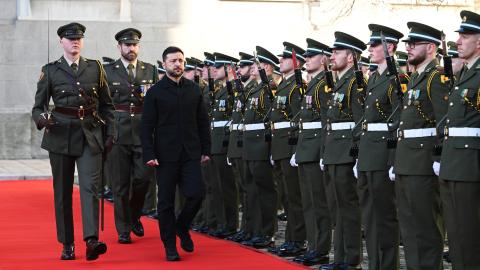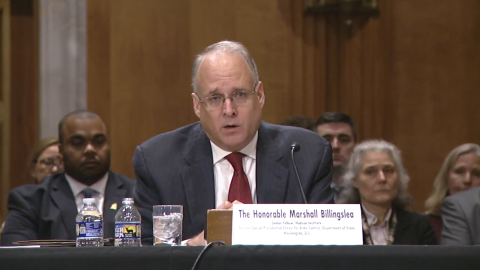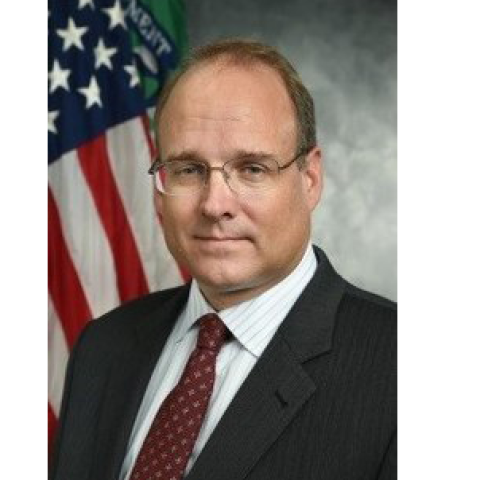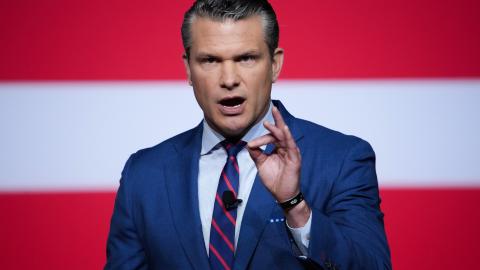This week, after Secretary of War Pete Hegseth, joined by President Trump, gave in-person direction and guidance to the military leadership at Quantico, Virginia, many in the media and at Washington D.C.-based think tanks bemoaned the speech as a waste of time and money. Retired military leaders stepped up to complain and multiple networks spent hours suggesting Secretary Hegseth’s speech was inappropriate. Their criticisms, whether on style or substance, reflect a growing problem – there is a sentiment that the highest levels of the military, particularly the service chiefs and combatant commands (COCOMs), are beyond criticism. This is not only wrong, but destructive to the concept of civilian control of the military.
The truth is that most of our military leaders have experienced an era marked by the absence of civilian criticism of military leadership. Even as recruitment numbers fell and public sentiment reflected weakening trust in the military, civilian leadership at the Pentagon remained effusive in praise of general and flag officers. Nowhere was this more prevalent than in the lack of accountability in the disastrous withdrawal from Afghanistan.
General Lloyd Austin is the personification of this lack of accountability. He failed in overseeing the withdrawal of U.S. forces from Iraq and again as a combatant commander in the war on ISIS. As a reward for his failures, he was promoted and then nominated/confirmed as Secretary of Defense, where he then failed again.
Secretary Hegseth’s speech reflects a sea change in that sentiment. Generals will be held accountable, and criticism and praise will be equally available for the first time in over 20 years. Americans should welcome this, as accountability ultimately makes our nation’s military stronger.
Additionally, the claim that face-to-face guidance is a “waste of time” misses the directives present in most military commands. Each of the current Combatant Commanders gave the equivalent of a command philosophy brief to their staff and subordinates within six months of taking command. Almost all military commands dictate that new commanders hold “all hands” briefs, and that new directives, to include command philosophies, are published and posted at all subordinate commands. Asking general and flag officers to attend the same type of briefing they force their subordinates to attend is not out of the ordinary.
As a point of history, in-person briefing is nearly always the preferred method for new commanders to receive or distribute guidance. When General George C. Marshall named Dwight Eisenhower Supreme Commander of Allied Expeditionary Force in Europe in December 1943, he directed Eisenhower to leave the Mediterranean theater and travel to Washington D.C. for direct, in person, guidance.
The Eisenhower example also applies to those who have complained that pulling COCOM leaders out of their headquarters for a day is dangerous. Our most active COCOM in terms of kinetic strikes, U.S. Central Command (CENTCOM), is in Tampa, not the Middle East. If a leader can command from Tampa, then he or she can command for several hours from Quantico.
Beyond the sentiment of the speech, a number of media figures and veterans criticized the substance of Hegseth’s directives. Most of these critiques focused on Secretary Hegseth’s calls for higher standards in the military. Former fighter pilot and failed House and Senate candidate Amy McGrath falsely claimed that the military does not have different standards for men and women. The military has had different scoring systems, and at times completely different physical events, for men and women for decades.
Standards, particularly physical fitness standards, have been falling in the military for years. As of 2024, one out of every four Navy sailors were obese. Nearly half of the Army was classified as overweight with some studies suggesting the number is even higher. Nothing about Hegseth’s directive to military commanders to reduce these numbers is, “inappropriate”; if anything it is long overdue.
Secretary Hegseth’s speech may have included some performative elements – the massive flag backdrop suggestive of George Scott’s performance as General Patton – yet a public speech is entirely appropriate. Commanders routinely give their guidance to the force, with a preference for in-person direction. Every service member could tune into the Secretary’s speech, and they could witness their leaders receiving higher headquarters’ intent in real time. The speech also reinstated accountability and helped to rein in the autonomy of military commanders.
Ultimately, Secretary Hegseth was appointed by the duly elected President of the United States before being approved by a majority of the Senate. If you believe in our system of government, as I do, then you should recognize that is how our government exercises control over the military. It is entirely fitting for Americans to see that control happening in-person, in real time, and not behind closed doors or through email.



















